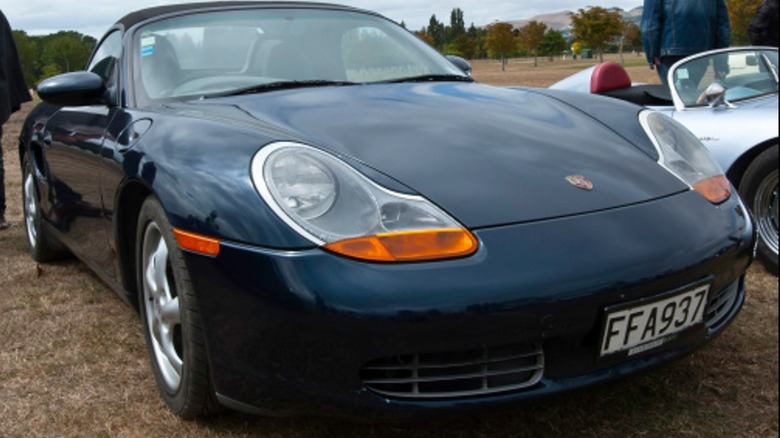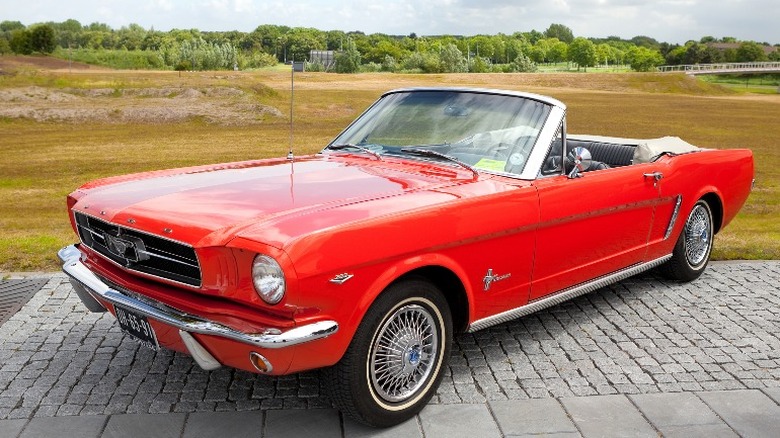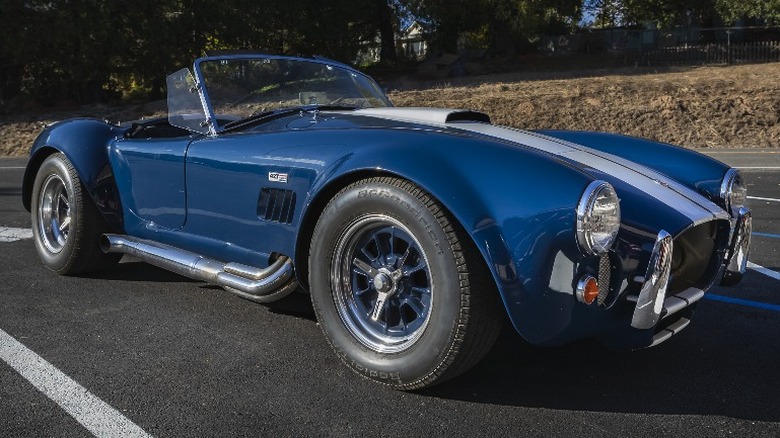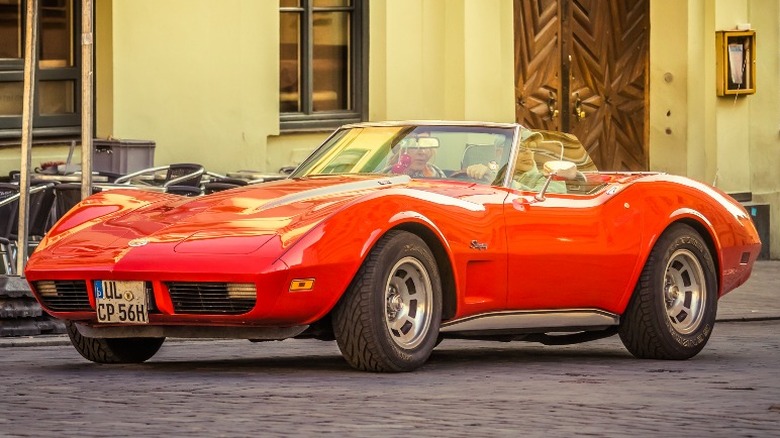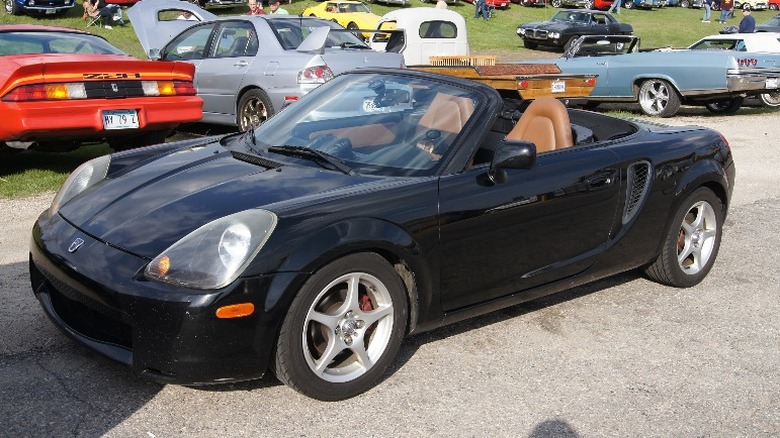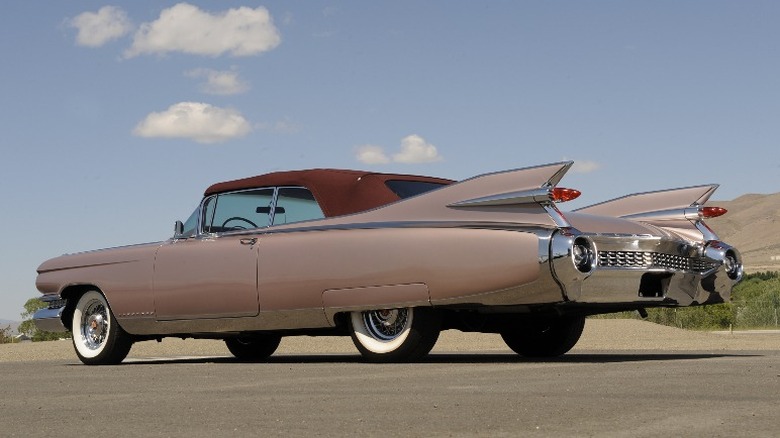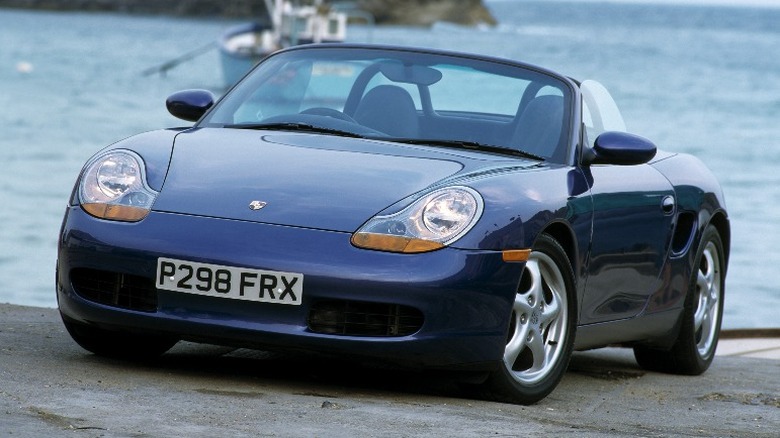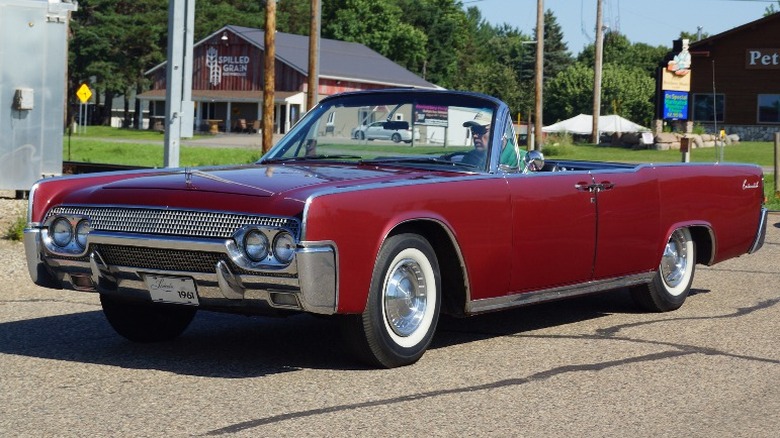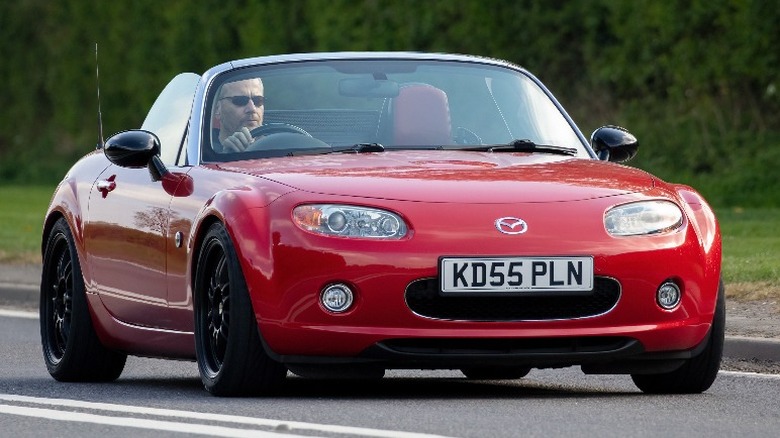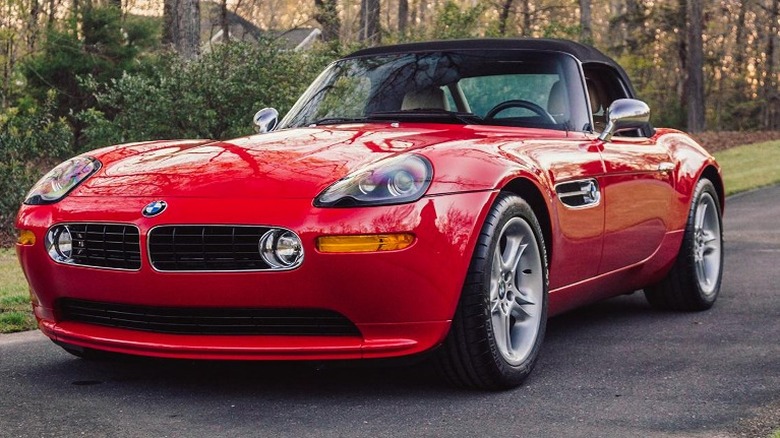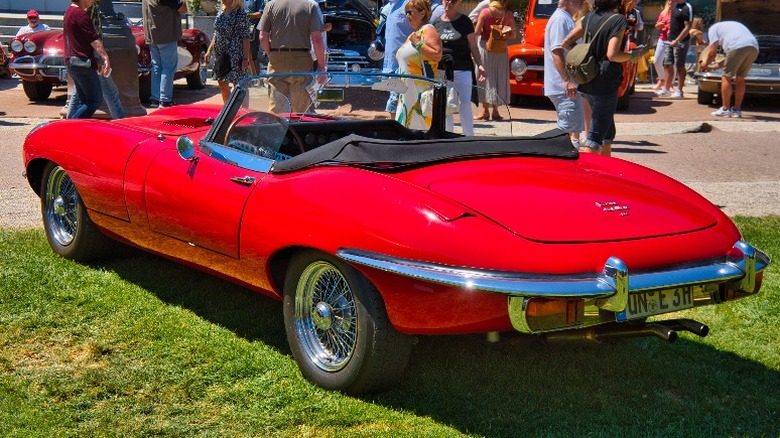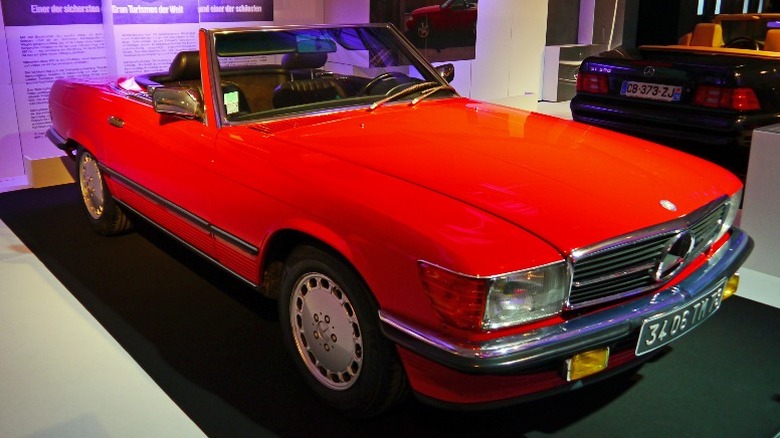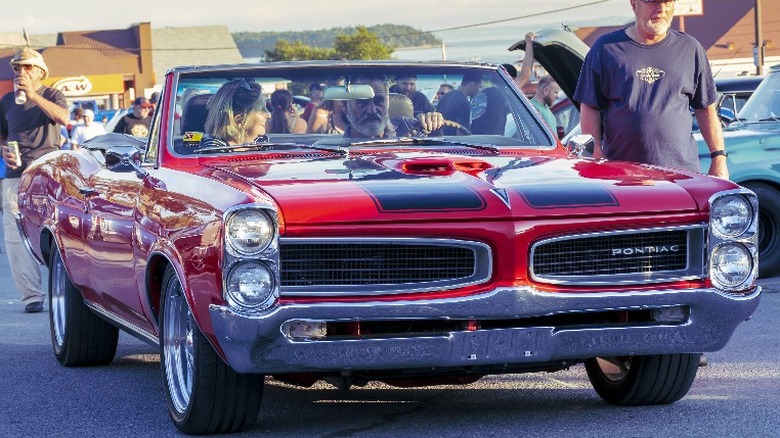Classic Convertibles That Are Actually Worth Owning Today
Open-air motoring in a convertible car has its allure, but for many, cruising in a classic drop top is even more appealing. Not only does it offer the driver and passengers an unobstructed view of the surroundings, but it also turns heads and makes an owner the envy of passers-by.
While a brand-new convertible (with a price starting at $35,000 but often much more) offers its owner a wind-in-the-face experience and the latest automobile technology, a classic convertible can be significantly less expensive. A classic 1974 Chevrolet Corvette, a 2001 Toyota MR2 Spyder, and a 1997 Porsche Boxster S can be purchased for under $30,000.
Many classic convertibles can also be a sound investment. The appreciation in value will depend upon several factors, including the car's rarity, its history, and its original condition. Limited-edition or low-production cars can become collectible while attractive mass-produced cars struggle to maintain their value. High-performance cars with success on the racetrack, celebrity-owned cars, or those with a unique story, will attract more attention when resold. Collectors look for classic cars in their original condition, making them more valuable than vintage cars with complete restoration, rewarding the buyer with a car worth owning.
1965 Ford Mustang Convertible
Ford Motor Company introduced the Mustang on April 17, 1964, and within a few weeks, the convertible was selected as the pace car for the 1964 Indianapolis 500. Benson Ford, grandson of Henry Ford and VP of Ford Motor Company, drove the specially prepared convertible, marking the beginning of the long Mustang drop-top history. Today, Mustang convertibles are in big demand, especially the Shelby performance models.
Available in a Hardtop, Convertible, and Fastback, Ford offered the Mustang with a six-cylinder and four V-8 options. At the low end, the 200 CID Inline-6 produced 120 hp at 4,400 rpm and 190 lb-ft of torque at 2,400 rpm, while the top-end 289 CID Hi-PO V8 generated 271 horsepower at 6,000 rpm and 312 lb-ft of torque at 3,400 rpm. The Convertible Six with a three-speed manual accelerated to 60 mph in a disappointing 11.9 seconds and reached the quarter mile in 18.0 seconds on its way to a top speed of 100 mph. For buyers looking for better performance, the Convertible Challenger V-8 with a three-speed manual accelerated to 60 mph in 8.3 seconds, and reached the quarter-mile in 16.6 seconds on its way to a top speed of 119 mph. The 1965 Shelby GT350 outperformed the standard Mustang in terms of acceleration, handling, and braking. The Shelby reached 60 mph in 6.6 seconds and a top speed of 138 mph. However, it was available only in a fastback version.
1962-1967 Shelby Cobra
Carroll Shelby is well-known for helping Ford convert the Mustang from a mildly disappointing performance line of cars when it was introduced in 1964 to one that featured a GT-production version, the Ford Mustang Shelby GT350. However, some historians argue that it was the first Cobra built in 1962 that marked the beginning of Shelby's long and successful career in the high-performance segment of the automobile industry.
Shelby produced the original Cobras, all with aluminum bodies, from 1962 to 1967 in limited numbers, a total of 998 units including street cars, competition cars, and semi-competition roadsters. He equipped the first 75 Cobras with a 260-cu.in. Ford V-8s, the remaining with 289-cu. in. engines (655) and 427-cu. in. mills (343), all with an independent rear suspension. The performance of the 427 Cobras was remarkable even for a muscle car in the early 1960s. The 2-door roadster produced 355 hp accelerating the lightweight sports car to 60 mph in an impressive 3.9 seconds, reaching the quarter mile in 12.6 seconds.
Today, an original 427 Cobra sells at auction for over a million dollars, but enthusiasts without the means to buy an original can still enjoy the "Cobra" experience with one of the many clones, kits, and look-alikes that have flooded the market. According to Classic.com, over the past five years, 1962- 1964 Cobra replica roadsters sold for an average price of $60,000 with a low of $7,000 and a high of $291,000.
1974 Chevrolet Corvette
Despite a price increase in the Corvette coupe and convertible models for 1974, Chevrolet experienced the second-largest production run to date in the brand's history. The automaker produced 32,028 coupes and 5,474 convertible models. As a result, today, '74 Vettes are in plentiful supply and reasonably priced, making them an ideal choice for enthusiasts looking for a convertible Corvette.
The '74 models are distinguished from previous years by their bumpers. In 1974, U.S. federal safety standards mandated an impact-absorbent bumper capable of surviving a 5 mph crash without showing any damage. Chevrolet installed flexible urethane bumpers with paint that matched the fiberglass body, replacing the chromed metal. The automaker offered three engines in '74. The base model L48, small-block 350ci with a single four-barrel carburetor produced 195 horsepower at 4,400 rpm and 275 lb-ft of torque at 2800 rpm. The L82 350ci generated 250 horsepower, and the LS4, 454ci, cranked out 270 horsepower at 4400 rpm and 380 lb-ft of torque at 2,800 rpm.
The 1974 Corvettes were the last big-block Corvettes ever built. The 454 4-speed convertible accelerates from 0 to 60 mph in 8.9 seconds and reaches the quarter mile in 15.6 seconds at 92.3 mph. The respectable acceleration, 380 lb-ft of torque plus power steering, four-wheel disc brakes, and a 4-speed close-ratio manual transmission make this Vette a pleasure to drive. According to Bring a Trailer, a 1974 Chevrolet Corvette Convertible 454 4-Speed sold for $27,500 in December 2022.
2001 Toyota MR2 Spyder
Toyota introduced the Spyder version of its MR2 in a year when roadsters were wildly popular and the market offered a plethora of participants, including the automaker's prime competitor, the Mazda Miata. The Toyota name, representing quality craftsmanship, the Spyder's weight of 2,195 lbs., about 100 less than the Miata, and an affordable base price, made the MR2 an excellent convertible choice.
Although Toyota offered previous MR2 models with different engine options, the 2001 version came with one choice. The 1.8-liter naturally aspirated, twin-cam, 16-valve four-cylinder uses the VVT-i variable valve timing technology to produce 138 horsepower at 6,400 rpm and 127 lb-ft of torque at 4,400 rpm. Power is sent to the rear wheels via a traditional five-speed manual transmission or a six-speed automated manual transmission. Although the MR2 Spyder might seem a bit underpowered, the roadster's lightweight contributed to a respectable performance, accelerating to 60 mph in 7.2 seconds.
The even weight distribution inherent in a mid-engine sports car and the low-slung, long-wheelbase platform hosting MacPherson struts at each corner provided a base for excellent cornering. Add to that a responsive electric hydraulic power steering system and sticky wide-track tires, and the MR2 Spyder stays firmly planted on the road. Kelly Blue Book says the fair market price range for a 2001 Toyota MR2 Spyder is $7,280 to $9,719.
[Featured image by 2001 Toyota MR2 via Wikimedia Commons | Cropped and scaled | CC BY-SA 2.0]
1959 Cadillac Eldorado
Often referred to as a "land yacht," the 1959 Cadillac Eldorado Biarritz convertible is a massive assemblage of sheet metal, powertrain, and a luxurious interior. The 225-inch-long body is nearly the same length as the huge Chevrolet Suburban and boasts some of the largest tail fins (with dual bullet taillights) to ever adorn an American automobile. Despite its length, the Biarritz Convertible has only two doors.
A naturally aspirated 6.4-liter V-8 engine with two overhead valves per cylinder produced 345 bhp at 4800 rpm and 435 lb·ft of torque at 3400 rpm. The front-mounted mill sent power to the rear wheels via a 4-speed automatic transmission. The Eldorado Biarritz weighed two-and-a-half tons but boasted enough power to accelerate the convertible to 60 mph in an estimated 10 seconds and reach the quarter mile in 17.3 seconds on its way to a top speed of 115 mph.
Heavily adorned with chrome and leather, the 1959 Cadillac was the first model to employ gas-filled shock absorbers making the already smooth ride even more comfortable, and cruise control. Cadillac limited the production to one year and a total of only 1,320 cars. Today, the short supply makes it a top collector's car. In July 2022, Bring a Trailer sold a Cherry 1959 Cadillac Eldorado Biarritz Convertible for a record-breaking price of $415,000.
1997 Porsche Boxster
When Porsche introduced the Boxster in 1997, it was the first specifically designed roadster from the automaker since the 550 Spyder in the 1950s. In 1997, Porsche's lineup comprised just two cars: the iconic 911 and the new Boxster. While the 911 series continued as Porsche's flagship line, the Boxster represented a return to a mid-engine sports car design from the more affordable touring car models featuring the water-cooled front-engine rear-wheel drive 968 produced from 1991 until 1995.
The Boxster employed a flat mid-mounted six-cylinder engine like the 911, giving it superior balance and weight distribution over front-engine designs. The 2.5-liter version of the all-aluminum-alloy engine offered 201 horsepower at 6,000 rpm and 181-lb.ft. of torque at 4,500 rpm. The power was sufficient to push the car to 60 MPH from zero in just under seven seconds.
Porsche installed an all-independent suspension both front and rear, composed of MacPherson struts, coil springs with aluminum control arms, and anti-roll bars. Although the 1997 Boxster offered no suspension adjustment settings like the later models, the mechanical power steering is responsive. The suspension and superior balance of the mid-engine design give the Boxster handling through the turns, characteristic of much more expensive sports cars. According to Car Gurus, the average price for a 1997 Porsche Boxster is $13,139.
1961 Lincoln Continental Convertible
Although the suicide doors are probably the most distinguishing feature of the 1961 Lincoln Continental Convertible, the simple, sculpted body style set it apart from other luxury cars of the era. The Lincoln Continental's fourth generation (1961-1969) is considered by many to be among the best-built American cars of its time and one of the most desirable in the luxury car's long history.
Lincoln fitted the Continental Convertible with a 7.0-liter (430 cu in) OHV V-8 producing from 300 to 320 horsepower and 465 lb-ft of torque. A 3-speed automatic transmission sent power to the rear wheels. The Lincoln accelerated to 60 mph in an estimated 10.7 seconds, reached the quarter mile in 17.9 seconds, and achieved a top speed of 118 mph.
Lincoln ran a three-hour dyno test on each of its 300-horsepower engines, after which engineers disassembled the powerplants for a visual inspection before rebuilding. The automaker tested each three-speed automatic transmission for 30 minutes before installation. Once completed, the vehicles were road-tested over a 12-mile course. Lincoln was so confident in the Continental's reliability; each model included a two-year or 24,000-mile warranty. Classic.com notes the average selling price at auction for the 1961 Lincoln Continental Convertible is $72,556.
[Featured image by DSC01052 via Wikimedia Commons | Cropped and scaled | CC BY-SA 2.0]
2005-2014 Mazda MX-5 Miata
Introduced in 1989, the Mazda Miata represents the classic two-seater roadster without the blistering acceleration and road-gripping characteristics of high-performance sports cars. The third generation introduced in 2005 kept the lightweight roadster formula intact but with a bigger engine and a body style change from the Coke-bottle shape prominent on the first two generations to one with straighter sides and a wider cockpit. Pronounced fender arches make room for larger and wider 17-inch wheels.
Power is supplied by a 2.0-liter four-cylinder with sixteen valves and variable intake valve timing. The lightweight engine is made with an aluminum block, head, and oil pan. An electronic throttle, light flywheel, and a stiff driveshaft enhance the engine's responsiveness. The 160 horsepower pushes the Miata to 60 mph in a respectable 6.7 seconds, the quarter mile in 15.2 seconds at 91 mph, and a top speed of 127 mph. The sports car brakes from 70 mph to zero in 168 feet.
While the Miata's four-cylinder engine is adequate for a small car with a curb weight of only 2,472 pounds. In 2005 Mazda moved the front engine back 5.3 inches to preserve the ideal 50:50 front-rear weight distribution and guarantee the sharp reflexes and excellent handling that make the roaster so fun to drive. Kelly Blue Book notes a 2005 Mazda MX-5 Miata has a fair market price range of $7,444 to $8,148.
1996 BMW Z3
BMW enthusiasts were treated to a first view of the Z3 at movie theaters in 1995 when they watched the latest James Bond film "GoldenEye," in which 007 drove an Olympic Atlanta blue roadster in Cuba. In the same year, others may have seen a preview of the new BMW sportscar in a limited edition two-door RWD roadster that gleamed the pages of the 1995 Neiman Marcus Christmas Book.
The Z3 announcement created a huge demand for the car even before production models hit the road. By February 1995, all the 1996 models were sold out. The open-air European two-seater appealed to a broad audience from baby boomers who owned traditional British sports cars such as the MGA, MGB, or TR-6 in their youth to later generations enamored by the Z3's sex appeal and affordable price. Other BMW devotees were enthusiastic about the platform and components shared with the 3-Series including the engine, E36 MacPherson strut front suspension, and the E30 trailing-arm rear suspension.
BMW equipped the 1996 2-door, 2-passenger Z3 with a 1.9-lier DOHC 16-valve I-4 producing 138 horsepower at 6,000 rpm and 133 lb-ft of torque at 4,300 rpm. Power is sent to the rear wheels via a 5-speed manual or 4-speed automatic transmission. The Z3 accelerates to 60 mph in 9.1 seconds and reaches a top speed of 116 mph. According to Classic.com over the past five years, the 1996-2002 BMW Z3 model has sold for an average of $22,417.
1961 Jaguar E-Type Series I
The iconic E-Type Jaguar with its sleek lines and gently flowing body curves is often considered by enthusiasts as the most stylish and attractive sports car ever made. Even Enzo Ferrari admired the car and is credited as saying the E-Type was the most beautiful car in the world.
Besides its unparalleled beauty and slippery aerodynamic design, the E-Type was a technology leader. Built as a unibody or monocoque with four-wheel independent suspension, the double wishbones and torsion bars up front combined with lower links, radius arms, two coil springs, and shock absorbers on each rear side along with rack-and-pinion steering to give the E-Type crisp handling and its passengers a comfortable ride. The four-wheel disc brakes came from Jaguar's racing cars.
The unique forward-tilting hood concealed a 3.8-liter (230 cu. in.) straight-six that generated 265 horsepower at 5500 rpm and 260 lb-ft of torque at 4,000 rpm. A four-speed manual transmission sent power to the rear wheels. Car and Driver test results showed an acceleration of zero to 60 mph in 6.3 seconds, zero to 100 mph in 18.2 seconds, a quarter mile time of 15.5 seconds, and a top speed of 145 mph. Classic.com claims the average sale price of the 1961 Jaguar E-Type over the past five years has been $216,048 with a low of $40,910 and a high of $720,000.
1987 Mercedes-Benz SL
While the earlier Mercedes-Benz SL R107 produced from 1972 through 1989 model years lacked power, the '87 featured a naturally-aspirated 5.5-liter V-8 with a Bosch KE-Jetronic fuel injection producing 227 bhp at 4,750 rpm and a maximum torque of 275 lb-ft at 3,500 rpm. Power is sent to the rear wheels via a 4-speed Automatic gearbox. Although the SL is heavy (curb weight of 3,569 pounds compared to a 1987 Corvette at 3,195), the Mercedes accelerates from zero to 60 mph (96 Km/h) in a respectable 6.80 seconds and reaches a maximum top speed of 149 mph (240 km/h).
The 1987 Mercedes-Benz SL featuring two doors and four seats offers the excellent ride comfort one would expect from a luxury car, but it also boasts a first-rate chassis built for road holding and handling. MB fitted the SL with an independent suspension featuring McPherson struts, a front-mounted anti-roll bar and Semi-trailing arm, and a trailing arm, anti-roll bar rear suspension. To stop the heavy car, the 560 SL Automatic braking system includes vented discs at the front and standard discs at the rear. According to Classic.com the Mercedes-Benz 560SL has been sold over the past five years for an average of $31,205.
[Featured image by Mondial de l'Automobile 2012 via Wikimedia Commons | Cropped and scaled | CC BY-SA 2.0]
1965 Pontiac GTO Convertible
The GTO is often considered a pioneer of the muscle car era, combining styling and performance at an attractive price. Pontiac had a banner year in 1965. Motor Trend bestowed the entire 1965 Pontiac lineup its Car of the Year award. While the convertible was the most expensive GTO trim, buyers were willing to pay more for the drop-top. Pontiac sold 11,311 convertible units compared to the least expensive body style, the sports coupe, which sold 8,319 units.
Pontiac equipped the standard GTO with a 389-cubic-inch engine rated at 335 horsepower at 5,000 rpm when fitted with the base 4-barrel engine. However, the Tri-Power option bumped the power output to 360 horsepower at 5,200 rpm and 424 lb-ft at 3,600 rpm. Transmission and axle ratio choices remained the same. The Tri-Power also included a close-ratio four-speed manual transmission, 4.11 limited-slip differential, metallic brakes, power steering, Rally Gauge Cluster, and rally wheels. The Tri-Power accelerated to an impressive speed of 60 mph in 5.8 seconds and reached the quarter mile in 14.5 seconds at a speed of 100 mph, achieving a top speed of 114 mph at the engine's 6,000 rpm redline.
The restyled 1965 GTO added a simulated hood scoop. Although it looked "cool" it contributed nothing to the car's performance. However, a dealer-installed option opened the scoop transforming it into a functional cold air intake. 1965 Pontiac GTO Convertibles typically sell in the range of $60,000 to $80,000.
